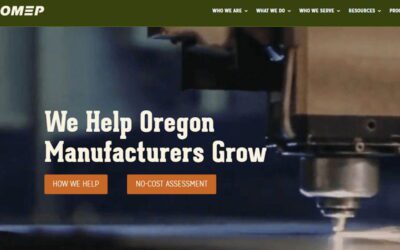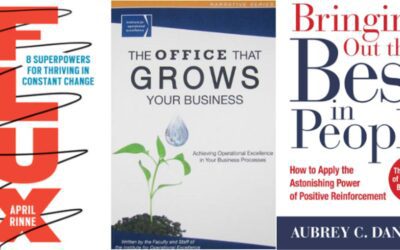In this article, we explore how three principles – business continuity planning (BCP), lean leadership principles, and an engaged workforce – are essential for the success and sustainability of small and medium sized manufacturers in Oregon.
1. Business Continuity Planning (BCP): A Foundation of Resiliency
Business Continuity Planning is more than just a reactive response to potential disruptions; it’s a strategic approach to building resiliency and ensuring operational continuity. For small and medium manufacturers in Oregon, BCP serves as a foundational element in identifying risks, developing mitigation strategies, and fostering preparedness across all levels of the organization.
Key to effective BCP is the involvement of the workforce. Employees are not only trained in operational disruption protocols but also empowered to contribute ideas and insights that strengthen the company’s resiliency. For example, involving frontline workers in risk assessments can uncover operational vulnerabilities that might go unnoticed otherwise, leading to more robust contingency plans.
2. Lean Leadership: Driving Efficiency and Continuous Improvement
Lean leadership principles complement BCP by optimizing processes, reducing waste, and enhancing overall efficiency. At its core, lean methodology encourages a culture of continuous improvement where every employee plays a role in identifying inefficiencies and implementing solutions.
The workforce is central to lean leadership, as it relies on employee engagement to drive meaningful change. By involving workers in lean initiatives such as Kaizen events, Gemba walks, and cross-functional teams, manufacturers in Oregon can tap into their collective expertise to streamline workflows, improve productivity, and deliver greater value to customers.
Integration of BCP and Lean Leadership: Strengthening Resiliency
The integration of BCP and lean leadership creates a synergistic approach that reinforces organizational resiliency and agility. When employees are trained not only to respond to disruptions but also to identify and address operational inefficiencies proactively, the entire company becomes more adaptable and responsive to change.
For example, during a supply chain disruption, a manufacturer that has integrated BCP and lean principles can swiftly reallocate resources, adjust production schedules, and minimize downtime. This agility is possible because employees are empowered with the knowledge and skills to make data-driven decisions and collaborate effectively across departments.
3. Workforce Engagement: A Catalyst for Success
Both BCP and lean leadership rely heavily on a motivated and empowered workforce. Employees who feel valued, engaged, and adequately trained are more likely to contribute innovative ideas, adapt to changing circumstances, and take ownership of their roles in ensuring business continuity and operational excellence.
Workforce engagement encompasses aspects such as training and development, clear communication channels, employee recognition, and opportunities for career growth. In the context of BCP, empowered employees are better equipped to handle disruptions, follow protocols, and contribute to continuous improvement efforts aimed at enhancing resiliency.
Similarly, in lean leadership, an empowered workforce drives efficiency gains by actively participating in problem-solving, suggesting process improvements, and embracing a culture of teamwork and collaboration. When employees are engaged in decision-making and given the autonomy to experiment with new ideas, they become champions of change and catalysts for driving organizational success.
In conclusion, the nexus of business continuity planning, lean leadership, and workforce engagement is essential for small and medium manufacturers in Oregon to thrive in a competitive and unpredictable business environment. By integrating these elements, companies can build resiliency, drive operational excellence, and foster a culture of innovation and adaptability that positions them for sustained success and growth in Oregon’s vibrant manufacturing sector.
Interested in how to integrate the Power of Three into your business?



